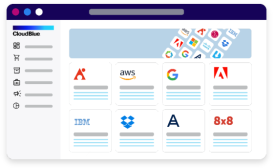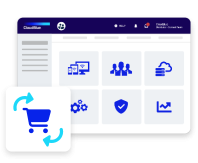Storage as a Service (STaaS) is a cloud computing model that provides users and organizations with on-demand access to storage resources over the internet. It allows users to store, manage, and retrieve their data without the need for on-premises infrastructure or hardware. STaaS offers scalable, flexible, and cost-effective storage solutions by leveraging cloud technologies.
Key aspects of Storage as a Service (STaaS) include:
Cloud-based Storage: STaaS utilizes cloud computing infrastructure to offer storage resources to users. Data is stored on remote servers maintained by the service provider, and users access their data via the internet. This eliminates the need for physical storage devices and provides easy accessibility from any location with an internet connection.
Scalability and Flexibility: STaaS provides the advantage of scalability, allowing users to scale their storage resources up or down based on their changing needs. Users can easily increase or decrease their storage capacity without the hassle of procuring and managing additional hardware. This flexibility enables efficient resource allocation and cost optimization.
Pay-as-You-Go Model: STaaS typically follows a pay-as-you-go pricing model, where users pay for the storage capacity they use and the duration of storage. This approach offers cost benefits as users only pay for the actual storage consumed, eliminating the need for large upfront investments in hardware or long-term contracts. It also enables cost predictability and cost optimization for businesses.
Data Security and Reliability: Service providers offering STaaS generally implement robust security measures to protect the stored data. They employ encryption, access controls, data replication, and disaster recovery mechanisms to ensure data security and integrity. By leveraging the expertise and infrastructure of the service provider, users can benefit from high levels of data reliability and availability.
Centralized Management and Accessibility: STaaS provides centralized management of storage resources through a user-friendly interface or API. Users can easily manage their data, organize file structures, and control access permissions. The data stored in STaaS can be accessed from various devices and platforms, allowing seamless collaboration and data sharing among users and organizations.
Data Backup and Recovery: STaaS often includes automated data backup and recovery mechanisms. Service providers perform regular backups, ensuring data redundancy and protection against data loss or corruption. In the event of accidental deletion, hardware failures, or other incidents, users can restore their data from the backup copies maintained by the service provider.













